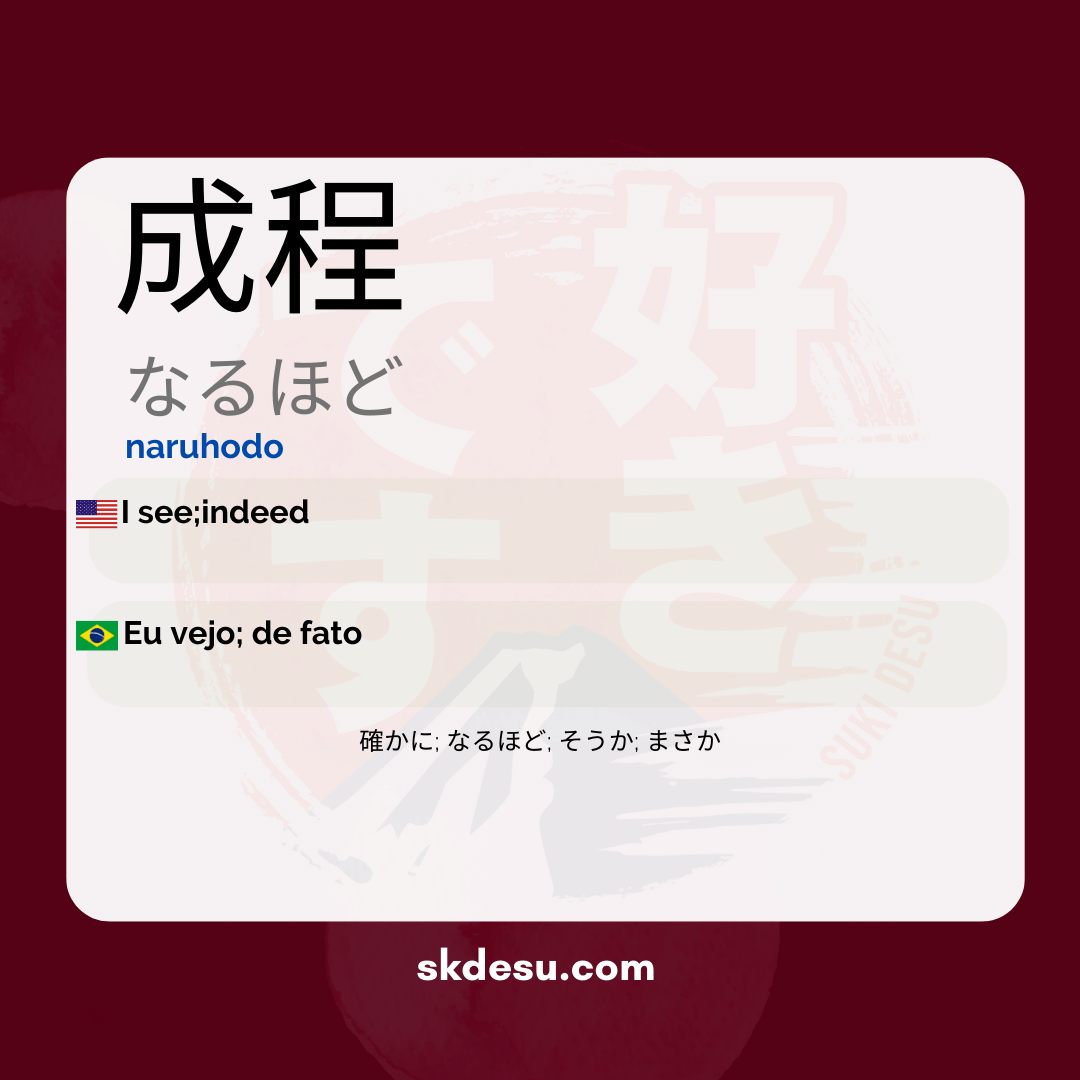Translation and Meaning of: 成程 - naruhodo
If you have ever watched an anime or talked to a Japanese person, you have probably heard the expression 成程 (なるほど). This word is one of those terms that seems simple but carries cultural nuances and specific uses in everyday Japan. In this article, we will explore its meaning, origin, and how it is perceived in the Japanese language, as well as tips to use it correctly. If you are learning Japanese or are simply curious about the culture of the country, understanding なるほど will enrich your knowledge.
The meaning and use of 成程 (なるほど)
The word なるほど is often translated as "I see," "oh, really?" or "that makes sense." It is used to express understanding or agreement with something that has been said. Unlike a simple "yes," it carries the nuance that you have reflected on the information before responding. For example, if someone explains a complex concept and you say なるほど, you are acknowledging that the explanation was clear.
However, it is important to note that なるほど should not be used in overly formal situations, such as serious business meetings. In these cases, Japanese people prefer more neutral expressions, such as はい (yes) or 承知しました (understood). This word is more common in casual conversations, informal debates, or when someone is genuinely surprised by new information.
The origin and writing of なるほど
The kanji form, 成程, is less common in everyday use, with the word more frequently seen written in hiragana (なるほど). The characters 成 (naru, "to become") and 程 (hodo, "extent" or "degree") suggest the idea of something that "becomes understandable within a certain degree." This etymology reflects well the modern usage of the word, which implies a process of gradual understanding.
Interestingly, なるほど was more commonly used in the past as an interjection of surprise, but today its meaning is more associated with the acceptance of an idea. Some linguists point out that it derives from ancient expressions that emphasized the conclusion of a reasoning process, which explains why it still sounds somewhat reflective.
Tips for using なるほど correctly
One of the best ways to memorize なるほど is to associate it with everyday situations. For example, when watching Japanese videos or dramas, pay attention when the characters use it. It usually appears in scenes where someone discovers something new or agrees with an explanation. Repeating these scenes mentally helps to fix the context.
Another tip is to avoid using it with hierarchical superiors unless you have a close relationship. In Japan, the language changes drastically depending on the level of formality, and なるほど can sound too casual in certain environments. If you're in doubt, opt for more polite alternatives like そうですか (is that so?) or a simple nod.
Vocabulary
Expand your vocabulary with related words:
Synonyms and similar words
- 確かに (tashika ni) - Certainly; indeed.
- なるほど (naruhodo) - I understand; it makes sense.
- そうか (sou ka) - Ah, I understand; that's how it is.
- まさか (masaka) - Unbelievable; it can't be!
Related words
Romaji: naruhodo
Kana: なるほど
Type: Noun
L: jlpt-n4
Translation / Meaning: I see; in fact
Meaning in English: I see;indeed
Definition: Eu vejo.
Quick Access
- Vocabulary
- Writing
- Sentences
How to Write in Japanese - (成程) naruhodo
See below a step-by-step guide on how to write the word by hand in Japanese. (成程) naruhodo:
Example Sentences - (成程) naruhodo
See below some example sentences:
Kare no doryoku ga naruhodo, seikou e to tsunagatta.
His effort, in fact, led to success.
His effort really resulted in success.
- 彼 (かれ, kare): he
- の (no): possessive particle (of)
- 努力 (どりょく, doryoku): effort
- が (ga): subject particle
- 成程 (なるほど, naruhodo): in fact
- 成功 (せいこう, seikou): success
- へ (e): direction particle (to)
- と (to): citation particle (here, indicating result)
- 繋がった (つながった, tsunagatta): connected, took to
Other Words of this Type: Noun
See other words from our dictionary that are also: Noun

